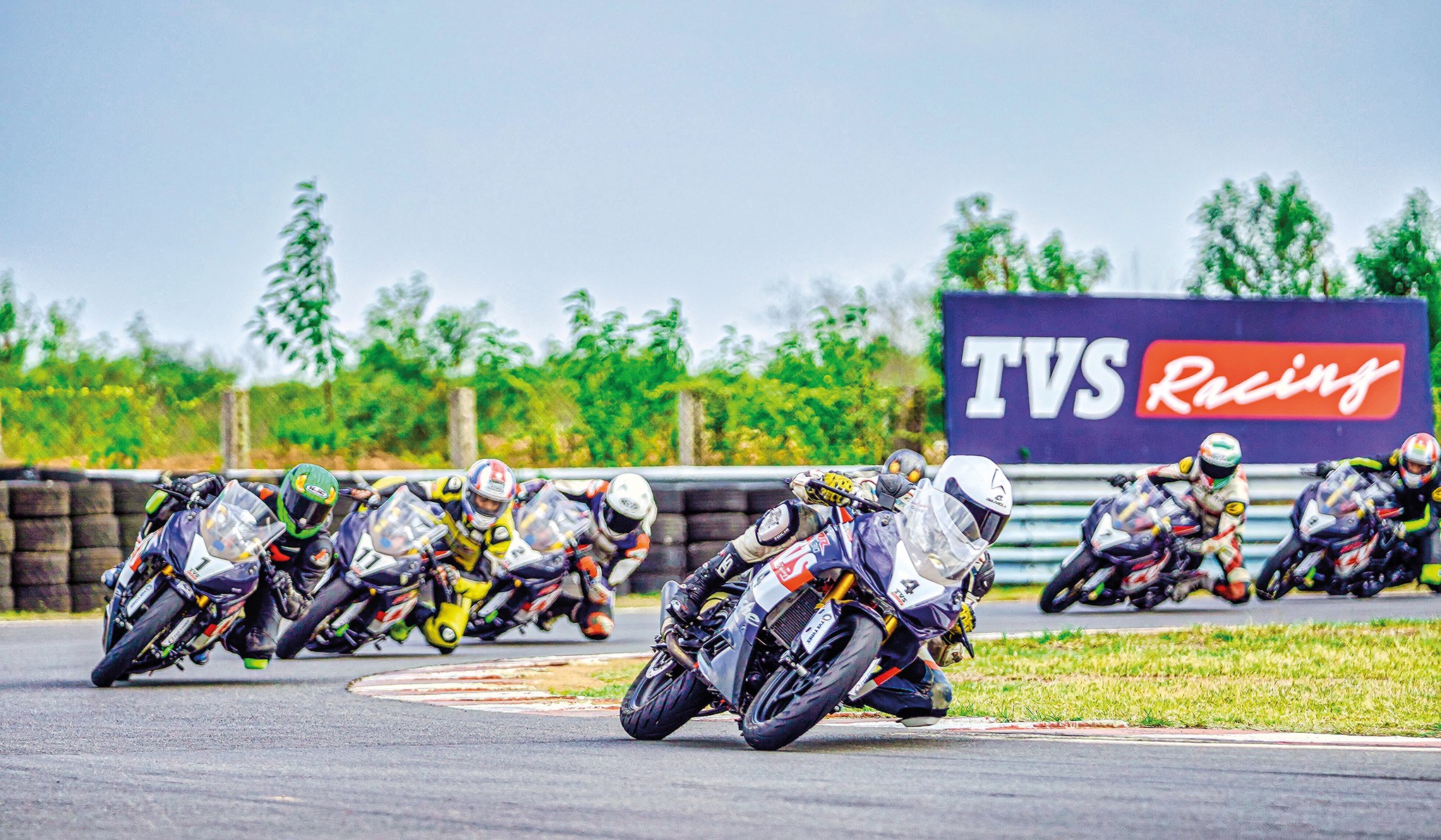TVS Racing Diaries| Deep dive into the RR 310 Cup
We go behind the scenes at TVS Racing to understand what makes the RR 310 Cup so special
 TVS RR 310 cup at the Indian National Motorcycle Racing Championship
TVS RR 310 cup at the Indian National Motorcycle Racing ChampionshipThe atmosphere at the Madras Motor Race Track (MMRT) during a race weekend is electric. For a spectator, the sensory input is just overwhelming — soundtracks from the souped-up single-cylinder engines and meaty exhaust notes, mechanical noises and aromas from the pits and visuals of the blistering pace at which bikes blaze down the track. It makes enthusiasts go bananas. An important source of this adrenaline rush at the Indian National Motorcycle Racing Championship (INMRC) is the TVS one make championship (OMC) RR 310 Cup. We’ve experienced this race through two lenses: watching the action while covering the event and also by participating in it. And now it is time to go behind the scenes to understand how it has been successfully executed since 2018.
 Testing the motorcycles on track helps TVS refine their road models
Testing the motorcycles on track helps TVS refine their road modelsConceptualisation
TVS Racing’s goal was simple, to help racers in the country reach newer heights in their racing careers — one step up on the brilliant RTR 200 race bikes. Additionally, testing the motorcycles on the racetrack helps TVS refine their road bike and improve its performance even more — another reason that led to the birth of the RR 310 cup.
 The race-spec RR 310 makes more than 44bhp
The race-spec RR 310 makes more than 44bhpRR310 Race bike vs RR310 road bike
“It’s very different. The stock RR 310 produces 33.5bhp while the race bike makes more than 44bhp,” says B Selvaraj, team manager at TVS Racing. The added horsepower leads to impressive results in a straight line with the race-spec RR 310 reaching Vmax at over 180kmph. For perspective, the road bike boasts a maximum top speed of 160kmph (claimed) in Sport and Track modes. “These bikes have to be fast in the corners as well and for that we have made improvements to the chassis,” adds Selvaraj. “The spring and damping rates have been altered to make it faster and more stable around corners and we have removed the parts unnecessary on the track, like saree guard and headlamp units”. The weight loss programme makes the race-spec bike tip the scales at around 134kg, lighter by a whopping 40kg.
Selection process
With more power comes responsibility. The RR 310 cup isn’t for beginners. The most important criteria for entry is at least one podium finish in any of the FMSCI-certified road racing events. Show proof of the same and TVS Racing will shortlist you for the selection process at the MMRT, where riders get ample track time to familiarise themselves with the motorcycle and show their skills. The fastest 12 are then selected for the championship. You can enter by paying `35,000 as a one time maintenance fee, in addition to `3500 which are participation fees that go to the Madras Motor Sports Club (MMSC).
 Entry criteria for the RR 310 cup is minimum one podium finish in a FMSCI-certified road racing events
Entry criteria for the RR 310 cup is minimum one podium finish in a FMSCI-certified road racing eventsAt the race weekend
The first step before the races even begin is the preparation of motorcycles. Engineers collect feedback from factory riders; Deepak Kumar, KY Ahamed and Jagan Kumar and then the motorcycles are improved further. A week before entering the battleground, decals are stickered onto the entire fleet of 15 RR 310s and 72 RTR 200s, which are then shipped to the paddocks at the MMRT or Kari Motor Speedway. The bikes are allocated between the national championship racers and one make racers. The rest of the process is standardised where mechanics inspect the bikes at regular intervals.
“We sell what we race, and we race what we sell,” says Selvaraj as the race programme has played a monumental role in improving the RR 310 road bike since its launch back in December 2017 — its suspension has been fine-tuned over the years and the 2020 BS6 update even brought Michelin Road 5 tyres, riding modes and ride-by-wire to the table. And his focus remains crystal clear. “Products will continue to develop. Our focus is on making our bikes faster and making our riders and engineers better. It’s the priceless learnings on the track that allow us to introduce newer, better and exciting TVS products.” With races postponed indefinitely due to Covid-19, we won’t be enjoying race-day theatrics any time soon, but when we do, we’ll not only appreciate the riders, but also the guys behind the scenes who play an equal role in making this spectacle a reality.
 The race-spec RR 310 is 40kg lighter than the stock model
The race-spec RR 310 is 40kg lighter than the stock modelThis is what the team manager at TVS Racing, B Selvaraj had to say, “It’s very different. One make RR 310 bike power has been improved significantly. It makes 10bhp over street legal production RR 310.” The added power leads to impressive results in a straight line with the race-spec RR 310 reaching Vmax at over 180kmph. “These bikes have to be fast in the corners as well, and for that we have made improvements to the chassis,” adds Selvaraj. “The spring and damping rates have been altered to make it faster and more stable around corners. We have focused on weight reduction by using advanced, lighter materials and manufacturing processes wherever possible. We removed parts unnecessary on the track, like saree guard, side stand and headlamps.” These changes have helped TVS reduce around 40kg.


